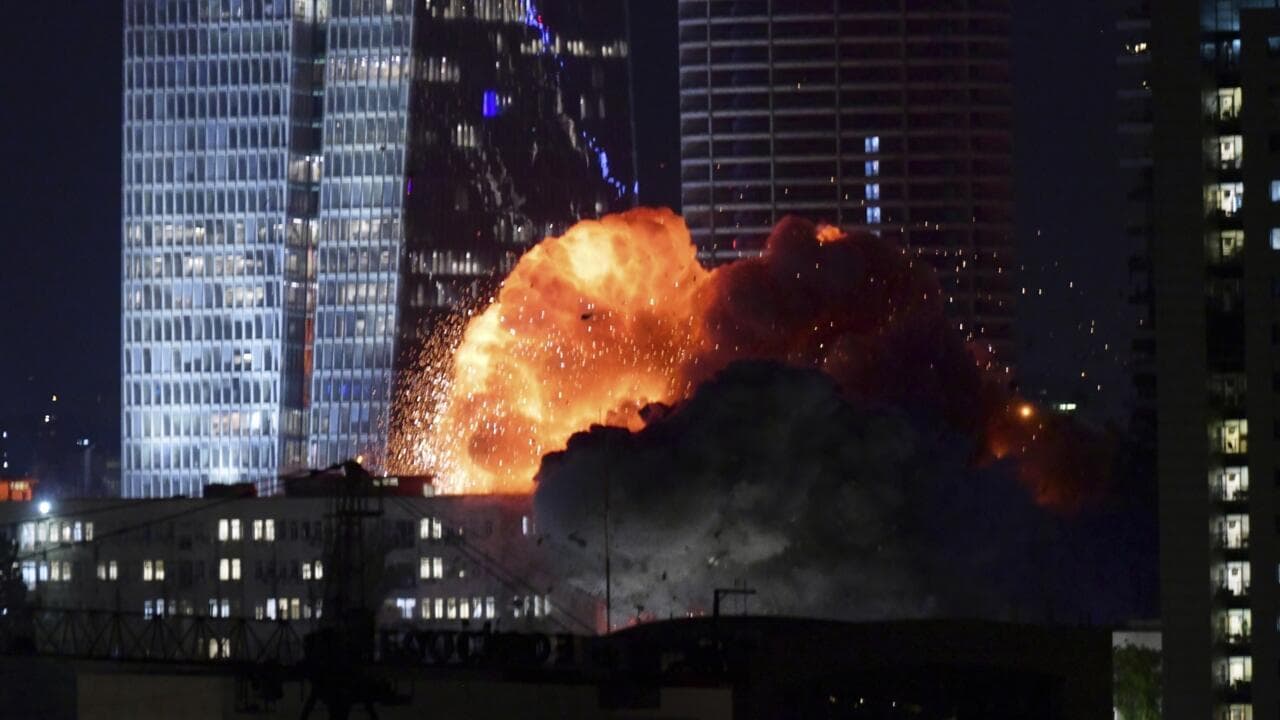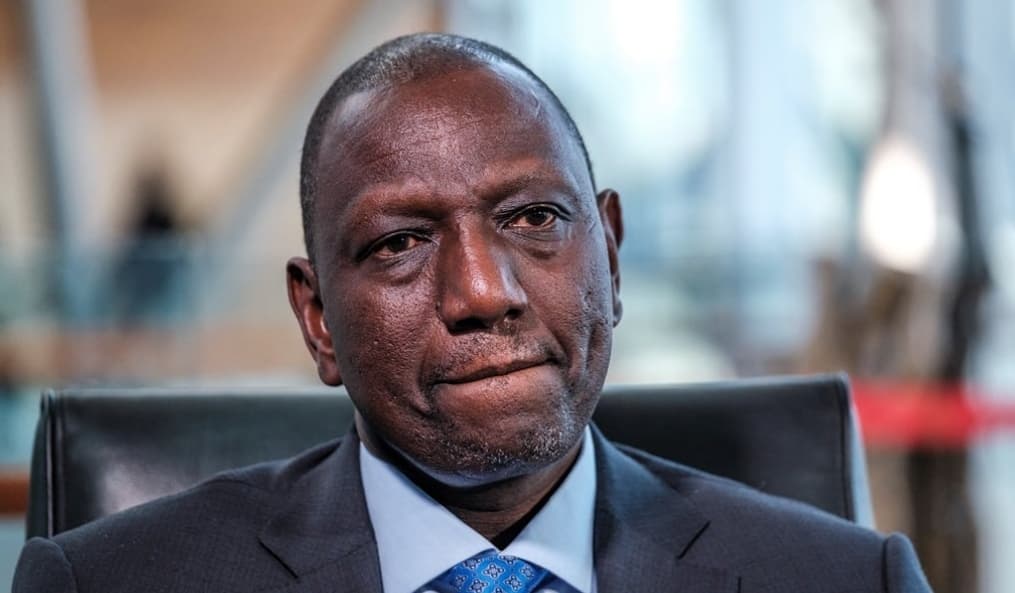The Los Angeles fires still rage - catastrophic reality has rivalled fiction in the home of American disaster movies. As the fires spread the insurance losses mount.
The Southern California fire season has become an annual event. But after eight months of no rain and unusually high winds, the start of 2025 has been catastrophic, with flames tearing through some of America's most iconic and wealthy neighbourhoods.
Five major wildfires are currently blazing out of control across the Los Angeles area.
The Eaton fire, near Pasadena, has burned thousands of acres. Another is in Hurst which has spread allover . A smaller fire in Lidia has burnt a few acres so far. And the Sunset fire, in the Hollywood hills keeps raging on.
But the largest is the Palisades blaze, in the affluent Pacific Palisades neighbourhood and parts of Santa Monica.
The devastating wildfires in Los Angeles have claimed 24 lives, with at least 16 people still missing. The situation remains dire, with forecasters warning of another round of high winds expected to hit the area by Tuesday.
The Pasadena fire chief, Chad Augustin, warned that the fire could "take off again" on Tuesday or Wednesday, fueled by the strong winds.
The National Weather Service has issued a "particularly dangerous situation" red flag warning for three areas across Ventura and West Los Angeles County. The warning is in effect until Wednesday, with north and northeast wind gusts of up to 60mph expected.
Firefighters are battling to contain the Palisades fire, which has burned through over 23,000 acres and is currently only 13% contained. The Eaton fire has burned through over 14,000 acres and is 27% contained, while the Hurst fire has grown to 799 acres and is 95% contained.
The California Governor, Gavin Newsom, has deployed an additional 1,000 National Guard service members to assist in Los Angeles, bringing the total to 2,500. The governor has also called for an independent probe into water shortages that have impaired firefighting efforts.
As the situation continues to unfold, residents are advised to stay indoors and avoid traveling unless absolutely necessary. The city's mayor, Karen Bass, has expressed confidence that President-elect Donald Trump will visit the fire-hit areas, despite his earlier criticism of Democratic politicians in California.
The wildfires have left many neighborhoods in LA looking like "war zones," with thousands of homes destroyed or damaged. The full extent of the damage is still unknown, but it is clear that the people of Los Angeles face a long and difficult road to recover.
Everywhere you go, in the mountains, foothills and canyons that surround the bowl of Los Angeles, you cannot miss the signs telling you what you cannot do because of the fire risk – smoke; have a barbecue; loiter with a running engine – the list goes on.
It is clear that California’s biggest city, and one of the richest urban areas in one of the wealthiest countries in the world, has spent hugely and for decades on the art of trying to prevent wildfires.
So the question so many are asking here is how all this failed so spectacularly in the Angelenos’ hour of need, indeed, days of need.
Well, the first answer, and the most important answer, comes down to global climate change and the effect burning fossil fuels is having on climatic events.
The autumn rains simply didn’t happen in the LA area. This, on top of years of drought and years of ever increasing summer and indeed winter temperatures, coupled with the annual winter Santa Ana winds being exceptionally strong.
So the ground – chaparral scrubland – is parched behind tinder-dry.
What’s key here is that these factors of weather intensification are now happening all over the world, and now here comes the ominous lesson.
I have spoken to junior firefighters on the frontline, right through to their seniors, at many locations in the past few days, and all of them say the same thing, which tragically appears to have gone all but unreported.
If you have the climatic factors noted above, you cannot use large fixed-wing aircraft to drop water and fire retardant on a burning area. You cannot use helicopters to do the same with the precision that you require, the dispersants and water will simply blow away and you cannot fly anyway in wind conditions much above 35 mph.
Wind conditions last week were often 60 to 100 mile an hour hurricane force gusts. Moreover, you cannot deploy human beings into these areas because the speed of the fire’s movement means that is impossibly dangerous.
So too for tenders and fire appliances, many vehicles were overwhelmed by the flames.
A second factor is that the anti-fire measures, supposedly mandatory for all homeowners, were widely ignored. Wealthy people, in particular, do not want to cut a minimum five foot space without vegetation around their homes, as the regulation requires. They want the opposite, dense greenery to provide privacy and, of course, wooden fences, which turned out to be a key accelerant in the fires which entered and obliterated large urban areas.
Third, the terrain means that clearing dead wood, which is a significant fire accelerant, in areas which are often steep-sided canyons, cannot be done mechanically. You have to put people in there, and often use ropes.
Frankly, it is virtually impossible.
Which brings us to the problem: urban sprawl. How is it that planners allowed people to build homes, when in the Pacific Palisades area, these homes are often minor palaces? And in these canyons, which everybody knows are prone to bush fires as a natural process on an almost annual basis?
And yet, in the Palisades area, these lavish homes are perfectly aligned along the canyons in areas where clearing brush is virtually impossible, and because of the terrain, the only access is endlessly winding, snaking roads, which again hampers fire defence. In short, allowing the building of houses in these areas around Los Angeles is like allowing the building of homes on flood plains in the UK. You can do it by all means, but one day, you will pay a price.
A fifth critical factor in all this is the water supply. Despite the Los Angeles authorities being acutely aware of fire risk, the water supply system is just that: a water supply for humans, for homes and businesses. It simply is not designed for sudden, massive surges in the requirement needed to fight fires.
So it was that in the critical time of need, the pressure in many fire hydrants simply wasn’t there, and they ran dry. As one firefighter in the Palisades area lamented to me, in the street his team was given to defend, every single house bar one was burned down.
That sole house survived because they could drain the swimming pool in the back garden to save it. The fire hydrant in that street was dry, overwhelmed by the pressure of demand.
Much has been made too of the fact that a key reservoir in the Palisades district wasn’t available for use because of long-running refurbishment.
Hardly a planning disaster, since key infrastructure needs to be kept functional, but it certainly didn’t help.
So, when you put all those factors together, you pretty soon see why the situation escalated so quickly, with such dramatic effect, accelerating at dangerous velocity, down the hillsides and canyon valleys to gain access to urban areas.
And then there is one final factor, ever present: human idiocy. Even in this year’s punishing drought, on New Year’s Eve in the Palisades chaparral, people gathered to party and let off fireworks.
Yup, they really did.
Within hours, firefighters were tackling a blaze in the Palisades area caused by said fireworks . They put it out, or they thought they put it out and left the area. There is now considerable circumstantial evidence to suggest that the Palisades blaze – the biggest – may have been caused by that fire lying dormant only to reignite some weeks later in the bone-dry ground and hurricane force winds.







